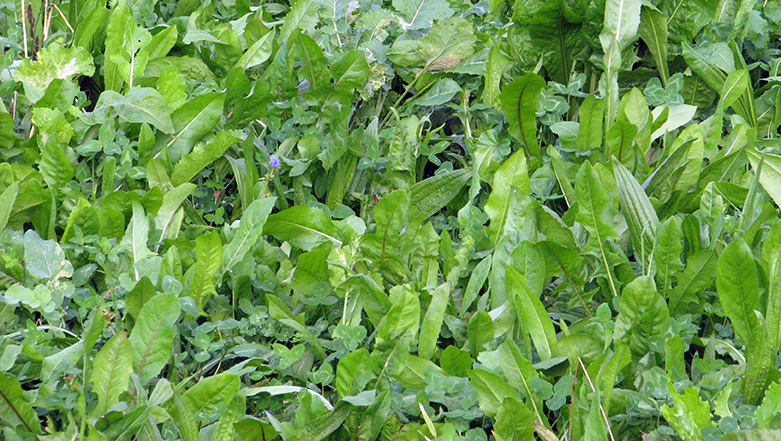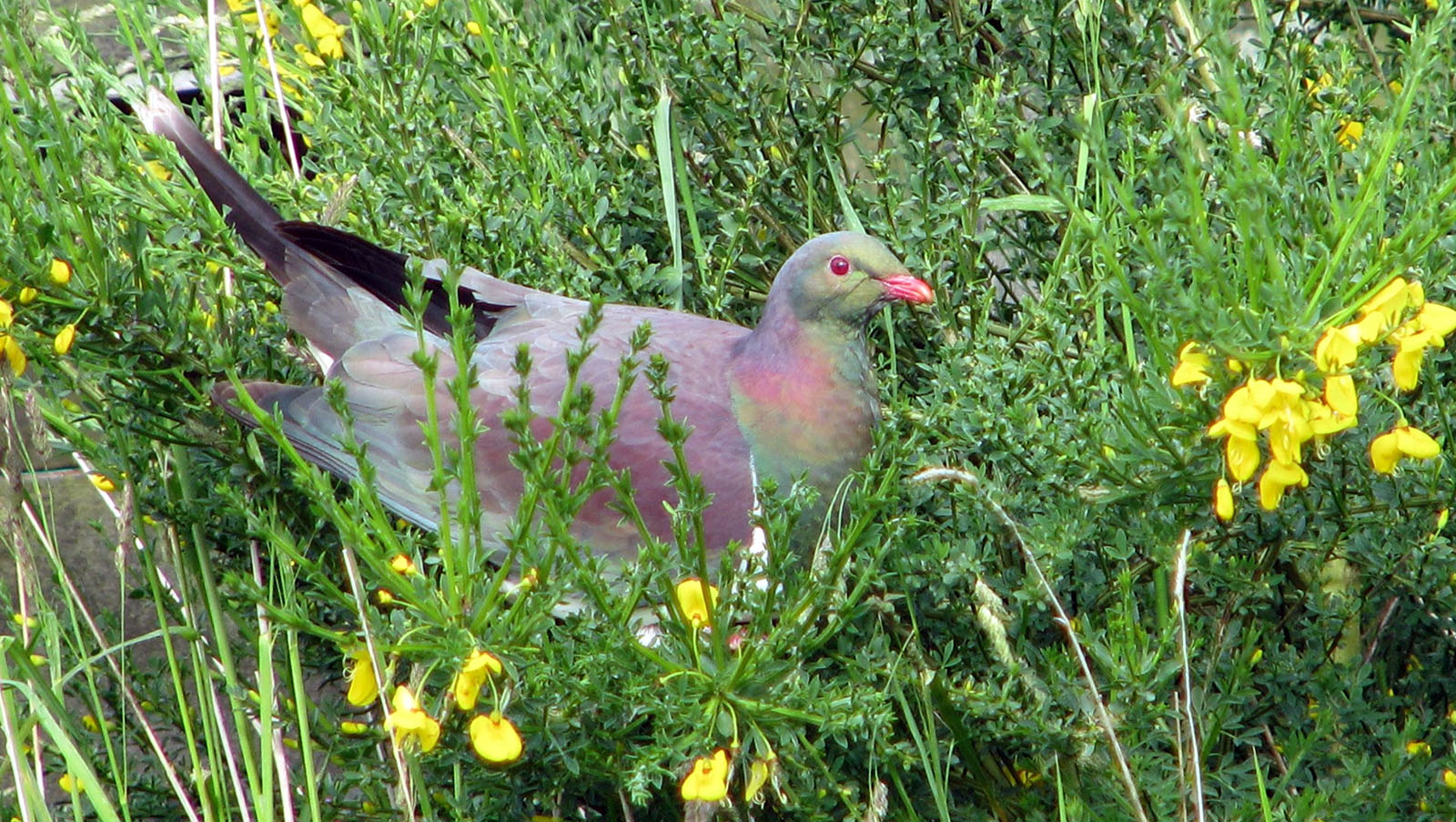Variety is spice of life yet when it comes to farming monocultures dominate. If farmers have one or two species growing in paddocks, how far away are they from a desert? Monocultures (single species) are notoriously biologically unstable and lift production costs to protect and maintain favoured species. Yet biodiverse landscapes reduce boom bust cycles by increasing resilience, flexibility, and reducing costs.
Australian PhD candidate Kate Sherren found a group of livestock farmers who were not doing best conservation practice but gaining better results. Unlike farmers steeped in traditional conservation they didn’t plant trees along waterways to just stabilise erosion, lower water temperatures, or beautify landscapes. Instead their interest focused on how the understory could benefit both livestock and wildlife, a perspective policy makers seldom explore. Furthermore, these farmers were finding greater biodiversity reduced farm risk.
When all you have is a hammer, everything looks like nails. Many technological tools farmers use reduce biodiversity. However Zimbabwean wildlife ecologist Allan Savory highlights a simple ecological law, a secret common to farming and conservation: A species establishes when conditions are right to germinate and thrive and leaves when conditions prevent its reproduction. This law goes a long way in helping farmers question their practices and look for innovative solutions through critical thinking and observation.
As North American agricultural editor Allan Nation points out, wild grasslands around the globe have highest meat production efficiencies because of biodiversity. Every grazing animal has a different niche (coarse grass, fine grass, broadleaf herbs, and browse) meaning their presence doesn’t compromise lifecycle of another grazing species. Such observations are driving polyculture grazing and cropping systems as farmers discover benefits of biodiversity.
The classic is promoted by North American entrepreneur Joel Salatin. In his pastoral system chickens follow cows where they scratch open dung piles and eat fly larvae. Chickens inoculate soil with faecal microbes, spread out cow dung, remove pasture pests, as well as producing eggs which farmers sell. So while income generated per cattle or chicken enterprise is less than traditional methods, the income per hectare actually increases because of synergy created bringing both enterprises together.
In nature birds always follow grazing herds due to disturbance they create. It’s the same in a garden, start pruning fruit trees and get buzzed by fantails. The number of seagulls following a plough indicates true land fertility. New Zealand, a country rich in bird life never explores how birds can contribute to farming and vice versa; an unintended outcome of education which segregates conservation and farming to separate knowledge silos and discriminates pioneers who bring them together.
Yet in North America broadacre farmers like Gabe Brown are developing techniques like cocktail cropping using no-till (no cultivation just sowing) to plant species other than what they wish to harvest. They recognise plants have different roles in nurturing soil function and fertility. Everybody knows legumes produce nitrogen, but radishes and carrots can also change soil function.
A simple mix is radishes, turnips, and peas. Only peas are harvested but the other two species shift nutrients through the soil profile; turnips lift nutrients from deep in the soil profile with its tap root to the surface through its leaves, radishes aerate soil with a massive taproot and are a sponge for nutrients like nitrogen. Growing winter feed for livestock can use the same principle. Its plant diversity which benefits livestock by reducing health issues experienced with monocrops of fodder beet, swedes, and kale. Gardeners call this companion planting. Napier farmers Dean and Antoinette Martin are creating pastures using the same principles helping to drought proof their property.

Salad bar, pastoral style. The diversity this sward offers livestock comes from a mix of tapped root plants plus grasses. Diversity lifts growth rates and improves livestock health.
Australian farmer Col Seis developed pasture cropping by autumn sowing winter wheat or oats directly into native summer pasture. If it’s a dry spring his livestock graze it, if not they let it seed and score additional income. An unintended outcome is a landscape which continues to improve its resilience to climatic events like floods and droughts by improving soil structure.
Both Seis and Brown represent a new wave of farmers looking at how nature can improve soil function while dropping costs. Central to their thinking is increasing soil organic matter which lifts fertility and moisture holding capacity, both of which lengthen growing seasons and land production. As soil function changes, so do microbial and insect populations living there creating opportunities for other species to thrive in these pastoral ecosystems.
Last century UK scientists like Sir George Stapleton were well aware of the benefits of diverse swards and maturity of plants for livestock production early last century but much of that understanding disappeared after WWII. Diversity is not limited to within paddocks. Encouraging inter-paddock plantings similar to agroforestry or hedgerows improves livestock health and well-being. Country Calendar highlighted successful Waikato organic dairy farmer Gavin Fisher as an example of this several years ago.
For example walnut leaves are a natural dewormer. Even plants like blackberry provide livestock nutrition because of how they accumulate minerals, vitamins, and compounds called secondary plant metabolites which are responsible for medicinal and flavour properties of plants. These beneficial properties accumulate in animal fats.
Ability of livestock to pick from a wide range of plant species to balance diets is called Nutritional Wisdom. According to American emeritus professor Fred Provenza grazing livestock are so good at balancing their own diets they outperform animal scientists when given opportunities in trials, same as French alpine herders can triple production beyond what academics calculate for their farming system. Farmers grizzle when livestock graze weeds along fence lines before well fertilised grass but this behaviour indicates weeds are providing better nutrition than grasses at that moment.
Introducing herbs such as chicory and plantain into pasture mixes is an example of how NZ farmers are using biodiversity to improve livestock performance. Yet primary industry’s response is to encourage farmers to plant and grow these as monocultures just like lucerne. This encourages faster livestock growth rates but diets remain unbalanced resulting in livestock health issues. It’s an example of how primary industry professionals are not asking the right questions.
For example, scientists argue genetically modified organisms (GMOs) are biodiversity and yes it may be useful; imagine creating a wheat that thrives in perennial grasslands (never needs sowing), produces straw which properly decomposes after harvesting, doesn’t require inputs of fertiliser, herbicide, fungicides, and pesticides, and produces grain actually makes people healthy when they eat it.
Not only I doubt scientists can do this but commercial nature of research funding encourages the opposite (requiring more fertiliser, herbicides, insecticide, and fungicide) which costs both farmers and communities if health statistics are anything to go by. How do we help industry professionals to ask the right questions in a commercial world that only values their efforts by how much money they bring their institutions and how many scientific papers they write?
Imagine a sheep that doesn’t require drenching, vaccinating, crutching, scratching, tailing, dipping and treating for foot rot.
It could be managed like cattle with the exception of shearing. Roger Beattie, a pioneering Banks Peninsula farmer found such a sheep on Pitt Island and now breeds and sells them. There is no interest from academic or conservation communities in commercialising native or near native animals and plants despite obvious benefits they bring to farming and conservation. Instead agricultural research focuses on patenting life forms such as GMOs and dismisses masterfully any responsibility regarding environmental contamination with the legal term ‘unintended consequences’. Where is the integrity in that?
Furthermore, could our environmental community do more to bring farmers on side by talking in farming terms? For example, how many kilograms of nitrogen do wild birds drop annually on pastures? Could this reduce fertiliser costs while encouraging more nesting sites? How far do grub eating birds feed from their nests? This could determine the distance between shelterbelts instead of irrigator width. What do spiders eat in pastures – parasites of livestock? What services does biodiversity offer farmers to reduce production costs and enhance landscape function? The reason Forest and Bird is silent on this front is simple.
In New Zealand the prevailing attitude is conservation happens only on the other side of the fence; land can only be farmed or in conservation but never combined. It’s what we are taught. Conservation focuses on saving singular species, never ecosystems which encourage their presence. When has or when will Greenpeace ever celebrate soil health as a global revolution?
Yet Landcare Australia is much more liberal in its focus by recognising ecological approaches to landscape management work much better if practiced in paddocks too. This is evidenced on their TV channel where farmers describe and explain how livestock grazing improves environmental health. Landcare Australia understands water quality and soil health are inseparable; that unless farmers are improving pastoral soil health riparian approaches to water quality fail.
This attitude is sadly missing in New Zealand and contributes to increasing regulations and environmental compliance costs on land holders. Media scream every time livestock sniff at a waterway but ignore trucks sprinkling landscapes with water soluble urea.
Environmentalists are as tunnel visioned as agriculturalists and yet there is a language that brings both together. As climate change, increasing desertification, and declining biodiversity are three sides of the same coin, why do both professions continue ignoring biodiversity to bridge differences?
John King specialises in regenerative agriculture. He lives in Christchurch. Contact him at 027 6737 885 or john@succession.co.nz




Leave a comment